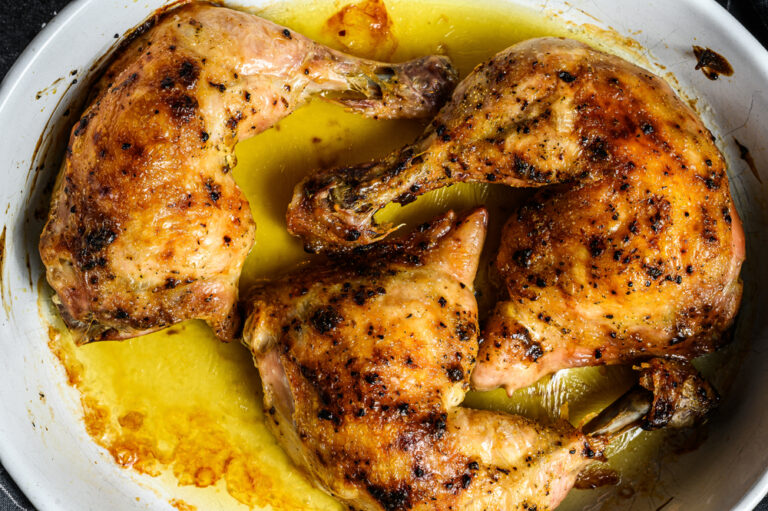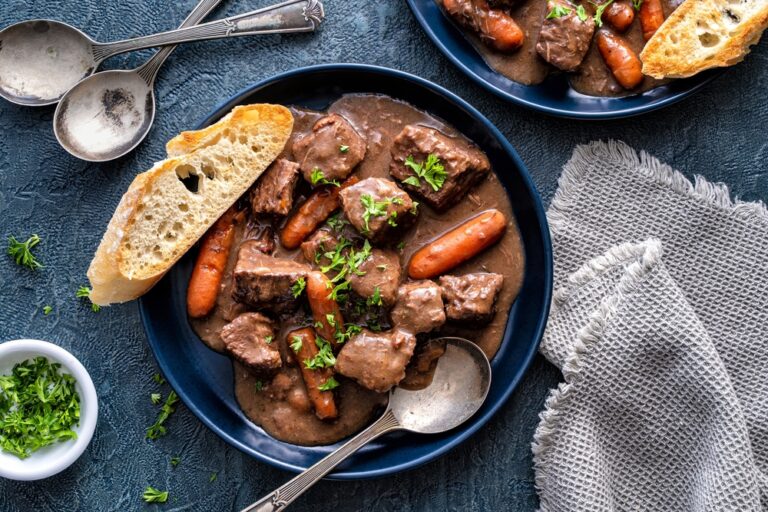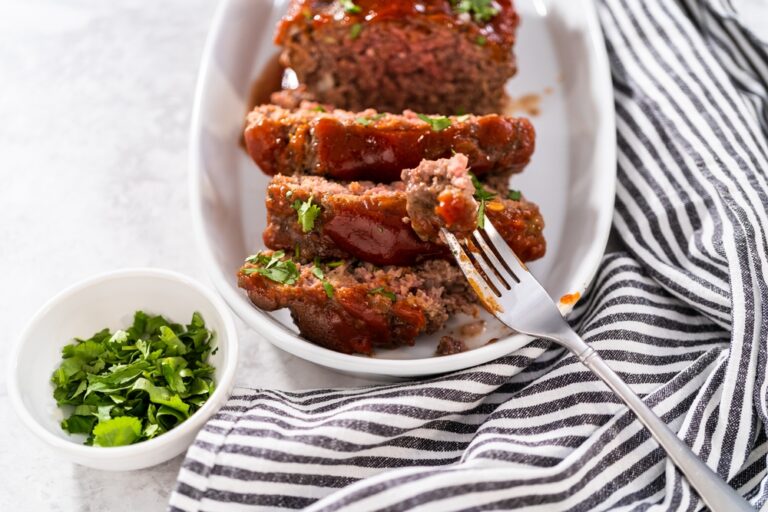German Meatballs
These German meatballs are a hearty, flavorful dish that pairs perfectly with classic sides like pretzels, potatoes, and a fresh salad. Rich in protein and full of savory goodness, they’ll become a new household favorite.
The combination of beef, pork, and spices delivers a comforting and satisfying meal, while the addition of sauerkraut enhances the flavor with its tangy, robust taste. This dish is easy to prepare yet feels special enough for any occasion.
With a simple list of ingredients and quick cooking instructions, this recipe is perfect for busy nights when you crave something filling and delicious. The whole family will love the balance of textures and flavors.
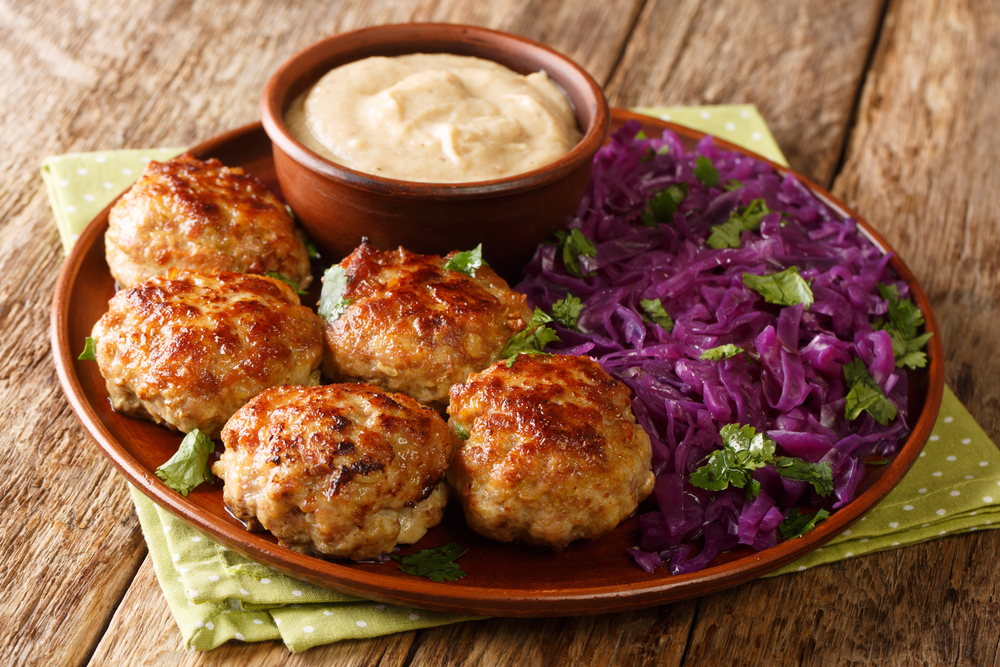
German Meatballs – Ingredients
Ground beef and pork form the heart of these meatballs, offering a perfect balance of flavor and juiciness. The combination of these meats ensures a rich and tender texture that will satisfy any appetite.
Finely chopped onion adds depth and subtle sweetness, while fresh parsley brings a burst of vibrant freshness that complements the savory meat mixture. A touch of Worcestershire sauce enhances the overall umami profile, tying the flavors together beautifully.
Bread crumbs help bind the ingredients, giving the meatballs structure, while a beaten egg and milk contribute to their softness and moisture. Sauerkraut, the star topping, provides a tangy contrast, perfectly balancing the rich, savory meatballs.
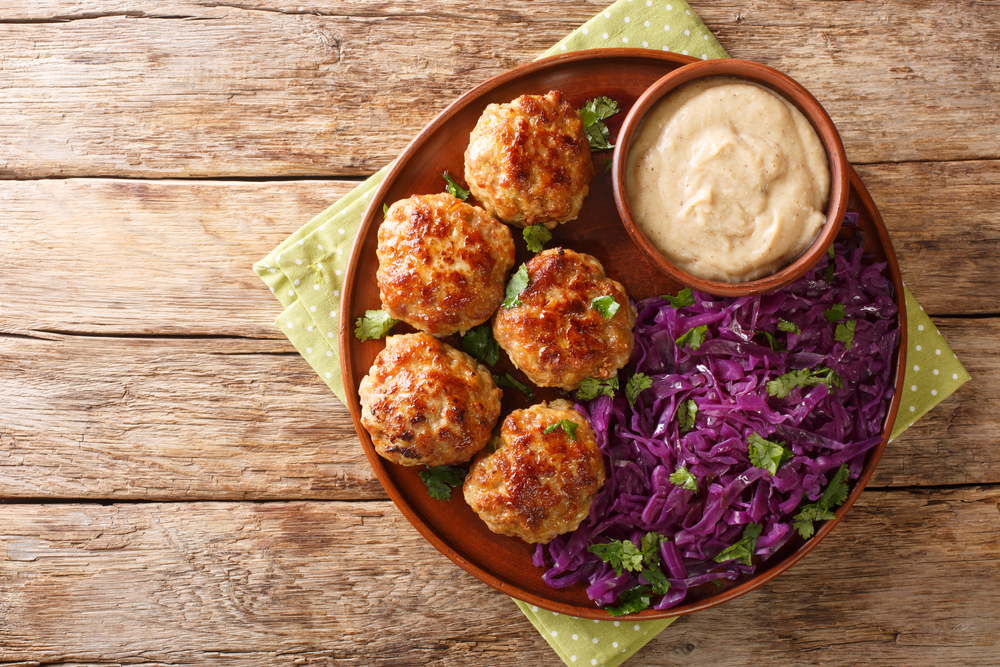
German Meatballs – Recipe Tips
- Balance the Meat Blend: The combination of ground beef and pork is key to achieving the perfect balance of flavor and juiciness. Be sure not to substitute with leaner meats as the fat content in the pork ensures the meatballs remain tender and flavorful. You can adjust the beef-to-pork ratio based on your preference, but the mix is crucial for the dish’s overall texture and taste.
- Don’t Overmix the Meat Mixture: When combining the ingredients, mix the meat and seasonings gently. Overmixing can lead to dense, tough meatballs. Use your hands to shape the mixture into meatballs, and avoid compacting them too tightly for the best texture.
- Adjust Sauerkraut for Desired Tartness: Sauerkraut is the star of this dish, but its level of tanginess can vary depending on the brand. If the sauerkraut is too sour for your taste, rinse it briefly under cold water before adding it to the skillet. Alternatively, add a teaspoon of sugar to balance the acidity if you prefer a milder flavor.
What to Serve with German Meatballs
- Buttery Mashed Potatoes: Creamy mashed potatoes are a classic and comforting side that pairs beautifully with the rich, savory flavor of the meatballs. The smooth texture of mashed potatoes absorbs the sauerkraut juices, creating a delightful contrast to the dish’s heartiness.
- Crispy Pretzels: Soft, warm pretzels add a deliciously chewy texture to your meal. Their slightly salty flavor complements the tangy sauerkraut and balances the savory meatballs perfectly. A drizzle of mustard can add an extra layer of flavor to this classic pairing.
- Green Salad with Vinaigrette: A fresh, crisp green salad with a tangy vinaigrette is a great way to cut through the richness of the meatballs. The freshness of the vegetables and the acidity from the dressing will lighten up the meal and provide a refreshing contrast to the heavier sides.
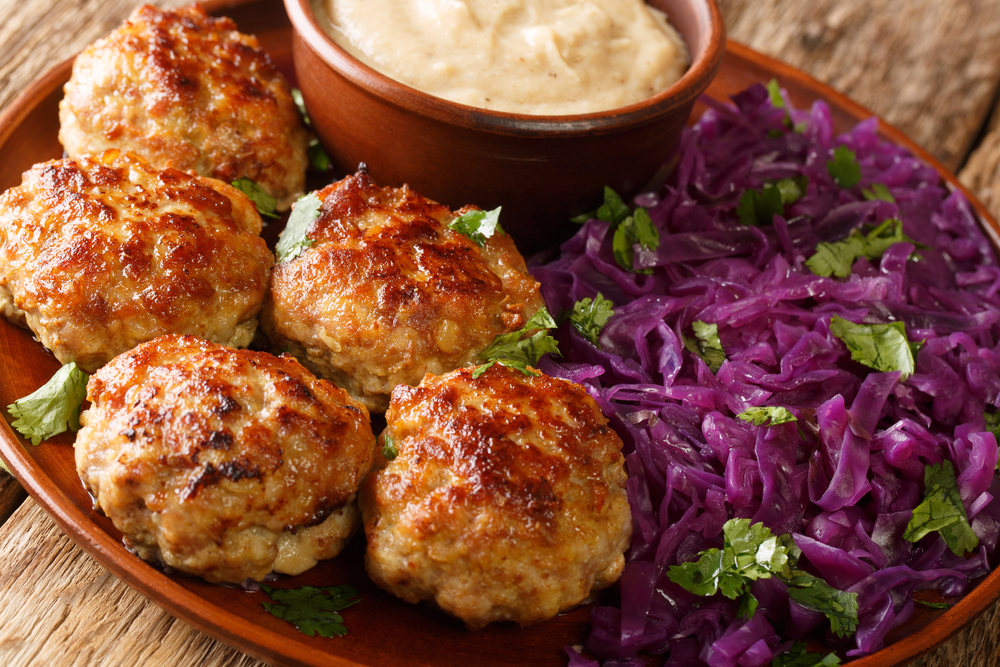
FAQ
1. Can I make German meatballs ahead of time?
Yes! You can prepare the meatballs and refrigerate them before cooking. This will allow the flavors to meld together and make the cooking process quicker. Just be sure to cook them thoroughly when ready to serve.
2. Can I substitute the pork with another meat?
If you’re not a fan of pork, you can use additional ground beef or ground chicken, though the texture and flavor may change slightly. The combination of beef and pork is traditional for its juicy, tender result, but feel free to experiment!
3. How do I store leftovers?
Leftovers can be stored in an airtight container in the fridge for up to 3 days. You can also freeze the cooked meatballs for up to 3 months. Just make sure to store them separately from the sauerkraut to preserve their texture.
4. Can I use sauerkraut from a jar instead of canned?
Yes, jarred sauerkraut works just as well as canned. Be sure to drain it thoroughly before using, or rinse it to reduce the saltiness if you prefer a milder taste.

German Meatballs
Ingredients
- 1/2 pound ground pork
- 1/2 cup finely chopped onion
- 1 teaspoon Worcestershire sauce
- 1 tablespoon chopped fresh parsley
- 1/3 to 1/2 cup water optional
- 1 large egg beaten
- 1 can 27 ounces sauerkraut, undrained
- 1/2 cup 2% milk
- 1 pound ground beef
- 2 to 3 tablespoons vegetable oil
- 3/4 cup fine dry bread crumbs
- 1-1/2 teaspoons salt
- 1/8 teaspoon pepper
- Additional chopped parsley for garnish
Instructions
- In a large mixing bowl, combine the ground beef, ground pork, chopped onion, bread crumbs, fresh parsley, Worcestershire sauce, salt, pepper, beaten egg, and milk. Mix until the ingredients are thoroughly incorporated. Shape the mixture into 18 meatballs, each about 2 inches in diameter.
- Heat the vegetable oil in a skillet over medium heat. Once hot, add the meatballs and cook, turning them to brown on all sides. Once browned, remove the meatballs from the skillet and set them aside to drain excess fat.
- Add the sauerkraut to the skillet, stirring it to heat through. Return the meatballs to the skillet, placing them on top of the sauerkraut. Cover and let simmer for 15-20 minutes, or until the meatballs are fully cooked. If necessary, add water to the skillet to maintain moisture during cooking.
- Once the meatballs are cooked, sprinkle them with additional fresh parsley before serving.



